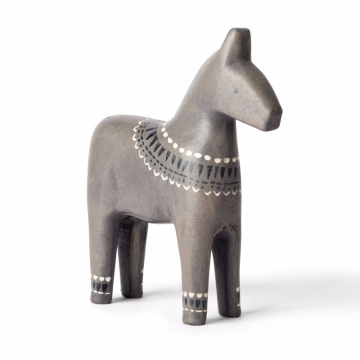Introduction to Japan's Shinkansen System
The Shinkansen, commonly referred to as Japan's bullet train, is a high-speed rail network that has become a hallmark of the nation's transportation infrastructure. Operational since its inaugural service in 1964, the Shinkansen was initially launched to accommodate the influx of travelers during the Tokyo Olympics. Since then, it has evolved significantly, now covering over 2,800 kilometers and connecting various major cities such as Tokyo, Kyoto, Osaka, and Hiroshima. This seamless interconnection has not only enhanced mobility within Japan but has also played a crucial role in regional economic integration.
The Shinkansen's significance extends beyond mere travel efficiency; it symbolizes Japan's advancement in technology and commitment to innovation. With trains capable of reaching speeds up to 320 kilometers per hour, the Shinkansen significantly reduces travel time, allowing passengers to journey from one city to another in a matter of hours. Passengers experience a smooth ride, bolstered by the train's advanced engineering, which minimizes noise and vibrations, making it an ideal choice for leisure travelers and business commuters alike.
There are several types of Shinkansen services, each tailored to meet varying passenger needs. The Nozomi service, for instance, is the fastest option, making the least number of stops, which makes it popular among travelers prioritizing time. The Hikari service is slightly slower but still efficient, making a moderate number of stops along its route. Lastly, the Kodama service is the slowest, halting at all stations and catering more to local travel needs. Regardless of the service chosen, the Shinkansen offers a dependable and transformative travel experience that embodies Japan's culture and commitment to excellence.
Planning Your Bullet Train Journey
Traveling through Japan by bullet train, or Shinkansen, is an efficient way to explore the country’s vast landscape and vibrant cities. Effective planning is crucial to make the most of this experience, starting with the ticket purchasing process. Travelers can opt for individual tickets or consider the Japan Rail Pass (JR Pass) for unlimited travel on certain lines over a designated period, which often proves beneficial for those who intend to travel extensively. The JR Pass must be purchased before arriving in Japan, hence advanced planning is advisable.
Selecting the best routes based on your itinerary is another essential aspect. The Shinkansen network is extensive, with major lines such as the Tōkaidō Shinkansen connecting Tokyo and Osaka, and the Sōkaidō Shinkansen extending from Nagoya to Fukuoka. Understanding the different categories of trains, such as Nozomi (the fastest), Hikari, and Kodama, allows travelers to optimize their travel time. Choosing the right train type based on one’s travel purposes is important, as each offers different speeds and stops along the way.
Timetables and frequency can also impact your travel plans. The bullet trains operate with remarkable punctuality, and frequent schedules throughout the day mean travelers have flexibility in their travel times. It can be beneficial to check the timetables in advance, especially during peak seasons or holidays, and to arrive at the station early to avoid any last-minute complications.
To enhance the efficiency of your bullet train journey, consider booking your tickets in advance when possible. This will not only guarantee you a seat, particularly during busy travel periods, but also give you peace of mind as you navigate the picturesque landscapes of Japan. Prioritizing these planning elements can significantly enrich your adventure through Japan’s remarkable bullet train system.
Onboard Experience: What to Expect
Traveling on a Shinkansen, or bullet train, promises an exceptional onboard experience that is both comfortable and efficient. Upon entering the train, passengers will immediately notice the spacious seating arrangements designed to provide ample legroom, which is a significant advantage for travelers embarking on longer journeys. Each seat is equipped with reclining options, ample back support, and adjustable headrests, allowing passengers to relax as they traverse Japan's scenic landscapes.
Cleanliness and maintenance are top priorities on the Shinkansen. The facilities, including restrooms, are consistently immaculate, ensuring a pleasant atmosphere throughout the journey. This level of care enhances the overall comfort, making it ideal for travelers of all ages. The quiet ambiance onboard contributes further to a relaxing environment, allowing passengers to unwind, read, or simply enjoy the view without distraction.
Food options on the Shinkansen add a unique cultural touch to the travel experience. Passengers can enjoy a variety of dining choices, from traditional bento boxes prepared with local ingredients to snacks and beverages available from vending machines. The bento boxes, in particular, showcase regional specialties and make for a delightful meal during the journey. For those preferring something lighter, the vending machines offer a selection of sandwiches, pastries, and drinks, ensuring that all dietary needs are catered to.
Travelers can also rely on the attentive staff who are readily available to assist with any inquiries or concerns during the trip. They ensure that the journey remains seamless for passengers. Furthermore, rigorous safety protocols are in place, instilling a sense of trust in the reliability of the Shinkansen service. Features such as automatic door systems, emergency response measures, and real-time monitoring contribute to a safe riding experience, reassuring first-time travelers that they are in capable hands.
Exploring Japan: Destinations Accessible by Bullet Train
The Shinkansen, or bullet train, represents one of the most convenient methods to explore the diverse regions of Japan. With its extensive network, travelers can effortlessly hop from one vibrant city to another while enjoying breathtaking scenery along the way. Key destinations accessible by bullet train include Tokyo, Kyoto, Hiroshima, and Osaka, each offering a unique blend of cultural experiences and historical significance.
Starting from Tokyo, Japan's bustling capital, visitors can immerse themselves in a blend of traditional and contemporary life. Landmarks such as the historic Senso-ji Temple and the modern Shibuya Crossing exemplify the city’s rich tapestry. Within a brief journey, travelers can reach Kyoto, renowned for its picturesque temples and shrines. The Kinkaku-ji, or Golden Pavilion, and the serene Arashiyama Bamboo Grove are must-visit sites that capture the spirit of ancient Japan. Don't forget to sample Kyoto's kaiseki cuisine, a delightful multi-course dining experience.
Next, a ride to Hiroshima reveals a city that encourages reflection and resilience. The Hiroshima Peace Memorial Park stands as a poignant reminder of history, inviting visitors to honor the past while appreciating the city’s vibrant contemporary culture. A short trip from Hiroshima leads to Miyajima Island, where the iconic floating torii gate provides a stunning photo opportunity.
Osaka, often characterized as a culinary haven, offers a plethora of dining options. From street food delights like takoyaki and okonomiyaki to fine dining experiences, the city caters to all tastes. For entertainment, a visit to Universal Studios Japan promises a day of excitement. To maximize your adventures in these amazing destinations, consider purchasing a Japan Rail Pass, which allows unlimited travel on most Shinkansen lines, enhancing your exploration of this beautiful country.








